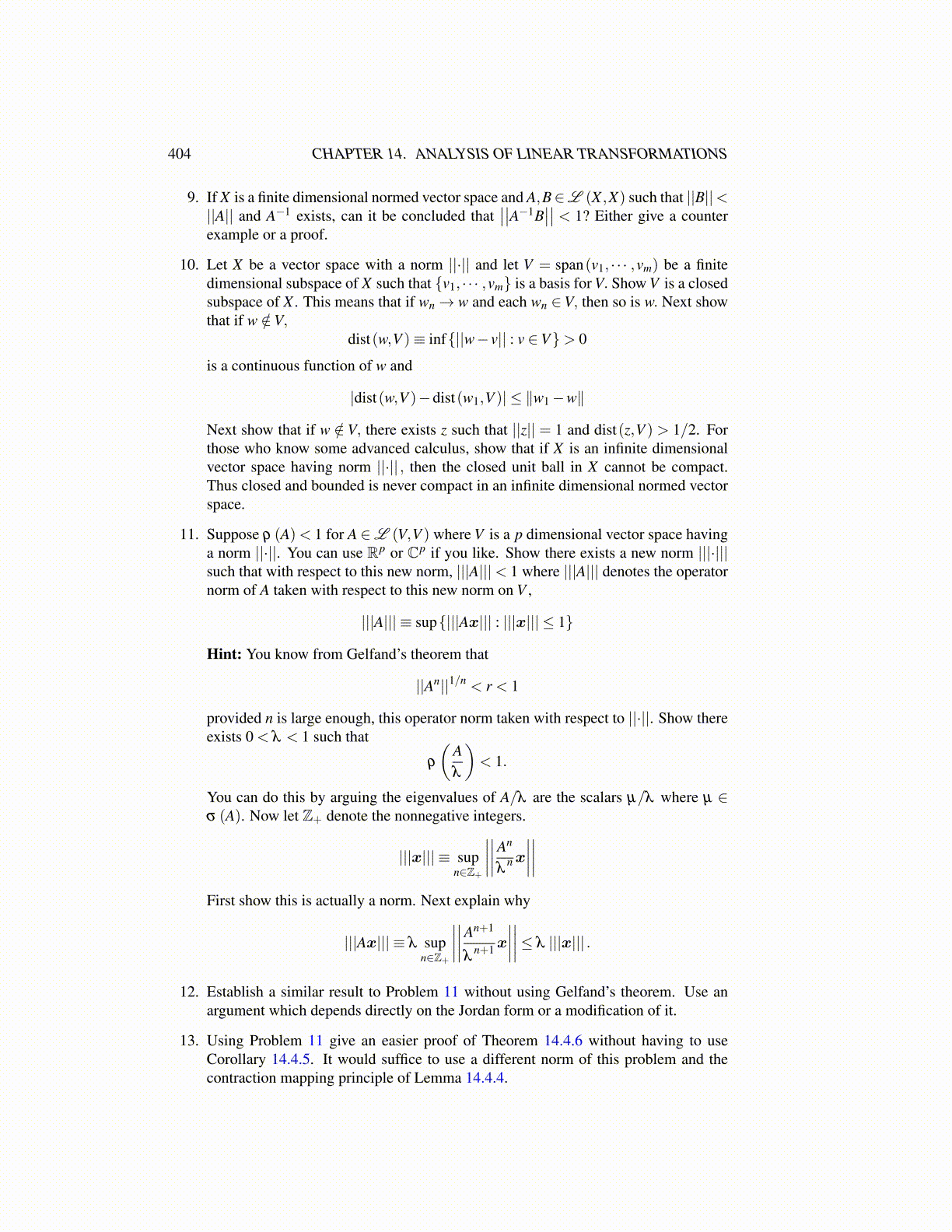
404 CHAPTER 14. ANALYSIS OF LINEAR TRANSFORMATIONS
9. If X is a finite dimensional normed vector space and A,B∈L (X ,X) such that ||B||<||A|| and A−1 exists, can it be concluded that
∣∣∣∣A−1B∣∣∣∣ < 1? Either give a counter
example or a proof.
10. Let X be a vector space with a norm ||·|| and let V = span(v1, · · · ,vm) be a finitedimensional subspace of X such that {v1, · · · ,vm} is a basis for V. Show V is a closedsubspace of X . This means that if wn→ w and each wn ∈V, then so is w. Next showthat if w /∈V,
dist(w,V )≡ inf{||w− v|| : v ∈V}> 0
is a continuous function of w and
|dist(w,V )−dist(w1,V )| ≤ ∥w1−w∥
Next show that if w /∈ V, there exists z such that ||z|| = 1 and dist(z,V ) > 1/2. Forthose who know some advanced calculus, show that if X is an infinite dimensionalvector space having norm ||·|| , then the closed unit ball in X cannot be compact.Thus closed and bounded is never compact in an infinite dimensional normed vectorspace.
11. Suppose ρ (A)< 1 for A ∈L (V,V ) where V is a p dimensional vector space havinga norm ||·||. You can use Rp or Cp if you like. Show there exists a new norm |||·|||such that with respect to this new norm, |||A|||< 1 where |||A||| denotes the operatornorm of A taken with respect to this new norm on V ,
|||A||| ≡ sup{|||Ax||| : |||x||| ≤ 1}
Hint: You know from Gelfand’s theorem that
||An||1/n < r < 1
provided n is large enough, this operator norm taken with respect to ||·||. Show thereexists 0 < λ < 1 such that
ρ
(Aλ
)< 1.
You can do this by arguing the eigenvalues of A/λ are the scalars µ/λ where µ ∈σ (A). Now let Z+ denote the nonnegative integers.
|||x||| ≡ supn∈Z+
∣∣∣∣∣∣∣∣An
λnx
∣∣∣∣∣∣∣∣First show this is actually a norm. Next explain why
|||Ax||| ≡ λ supn∈Z+
∣∣∣∣∣∣∣∣An+1
λn+1x
∣∣∣∣∣∣∣∣≤ λ |||x||| .
12. Establish a similar result to Problem 11 without using Gelfand’s theorem. Use anargument which depends directly on the Jordan form or a modification of it.
13. Using Problem 11 give an easier proof of Theorem 14.4.6 without having to useCorollary 14.4.5. It would suffice to use a different norm of this problem and thecontraction mapping principle of Lemma 14.4.4.